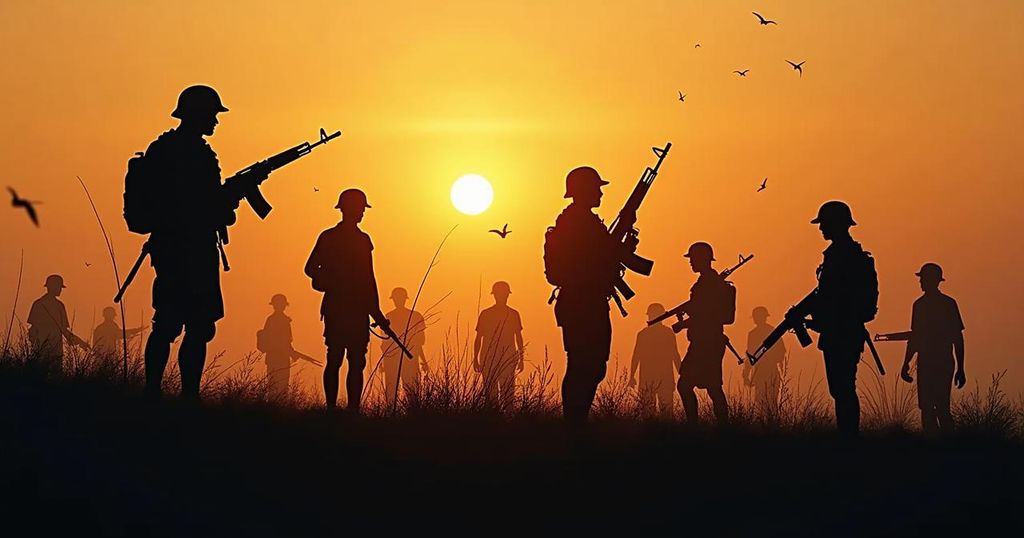This article discusses the Sri Lankan Civil War and the military’s successful operations against the LTTE, detailing the origins of the conflict, key historical events, and the government’s efforts in negotiations versus military solutions. It highlights the implications of this conflict in understanding counter-insurgency efforts globally, with comparisons to other insurgencies such as those in Ireland, Nigeria, and the Philippines.
This paper is the first in a series analyzing the Sri Lankan Civil War through the perspectives of a naval officer who actively participated in military operations against the Liberation Tigers of Tamil Eelam (LTTE). The conflict, rooted in various political, economic, and administrative factors, escalated with significant incidents such as the 1956 Sinhala-Only Act, the 1972 Republican Constitution, the 1977 Parliamentary elections, and the devastating ethnic riots of July 1983, which marked the onset of armed conflict. The LTTE’s killing of 13 soldiers on July 23, 1983, initiated Eelam War I, leading to a series of violent confrontations over the subsequent decades. The Indian intervention with the Indian Peacekeeping Forces from 1987 to 1990 proved ineffective, leading to Eelam War II, which lasted until a ceasefire in 1995. This was followed by Eelam War III, which began in 1995 and resulted in the longest ceasefire until it was revoked by the Sri Lankan Government in early 2008 amidst resumed hostilities. The ultimate stage, Eelam War IV, commenced in 2006 and culminated on May 18, 2009, with the military’s significant victory over LTTE, illustrating the effectiveness of military strategy in ending a protracted insurgency. Throughout the conflict, the Sri Lankan government sought to resolve matters through negotiations, pursuing ceasefires and engaging in direct discussions with the LTTE. Notable efforts included the Indo-Sri Lanka Accord and various negotiation attempts aimed at power-sharing and finding a federal solution. However, the consistent obstinance of the insurgents, coupled with the leadership of Velupillai Prabhakaran, ultimately led President Mahinda Rajapaksa to conclude that a negotiated settlement was unattainable, pushing for a decisive military strategy instead. The conclusion asserts that the Sri Lankan military’s triumph not only signifies a critical turning point in the region’s history but also serves as a case study for analyzing counter-insurgency strategies worldwide. Notably, Professor Paul Moorcraft highlights this as a rare instance where a large-scale indigenous insurgency was wholly defeated by military force rather than through diplomatic negotiations. The comparison to the Irish scenario and the ongoing battles against insurgencies such as Boko Haram in Nigeria illustrate varying outcomes based on the governmental responses and strategies deployed. The lessons derived from the Sri Lankan conflict have significant implications for global counter-insurgency tactics and peace-building initiatives.
The Sri Lankan Civil War, which spanned over three decades, can be traced back to a multitude of socio-political influences and historical grievances among ethnic groups on the island. The introduction of laws favoring one ethnic group over another, particularly the Sinhala-Only Act of 1956, catalyzed tensions between the Sinhalese majority and Tamil minority. The armed conflict escalated following various political missteps and brutal reprisals, most notably the 1983 riots that ignited a largely prolonged period of violence involving the LTTE, which sought to establish an independent state for Tamils. The military engagements not only highlighted the struggle for power but also revealed the intricate challenges of integrating diverse communities into a cohesive national identity following years of conflict. The military’s final victory over the LTTE in May 2009 marked a significant milestone in Sri Lanka’s history, heralding an era of peace for a nation scarred by violence and division.
In summary, the Sri Lankan Civil War provides a vital case study in the complexities of counter-insurgency measures, illustrating both the potential for military success and the challenges of establishing lasting peace in a divided society. The thorough defeat of the LTTE and subsequent stability suggest fruitful lessons for other nations grappling with similar insurgencies. The unique circumstances surrounding the conflict and its resolution demonstrate the significance of understanding local socio-political dynamics in shaping effective military and peace-building strategies.
Original Source: slguardian.org






